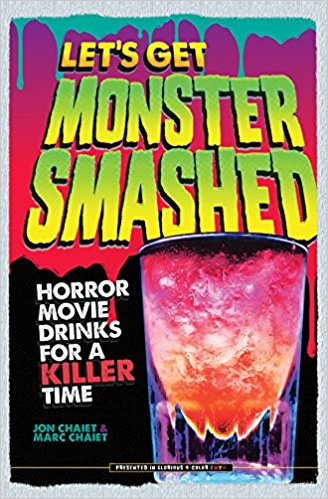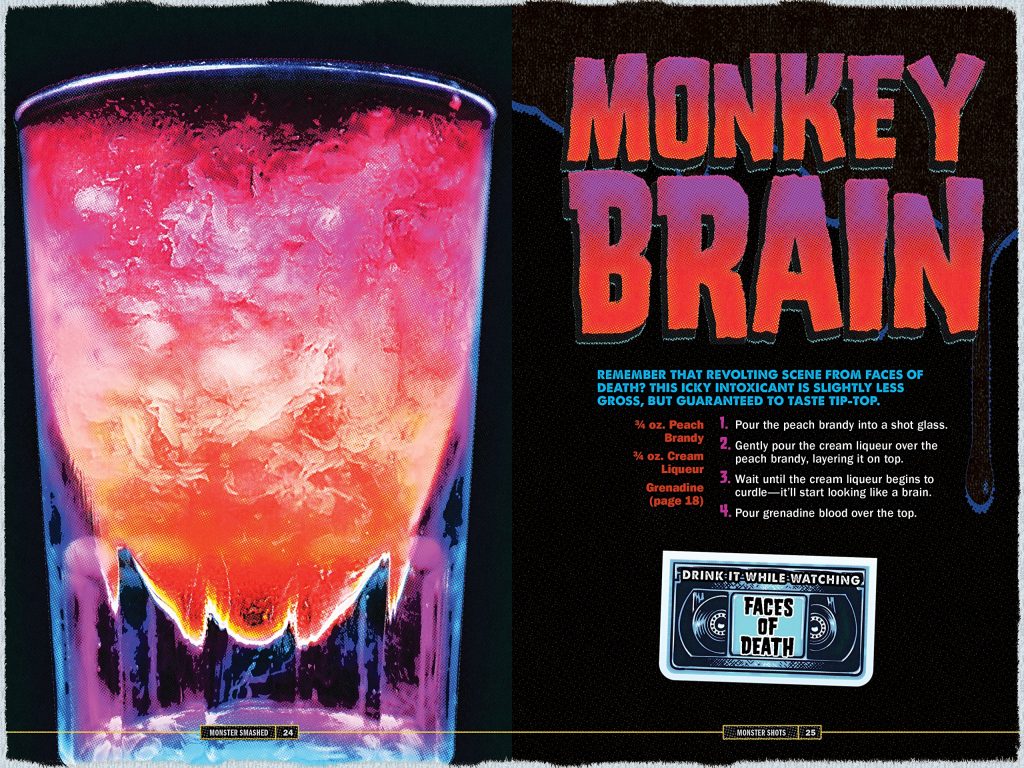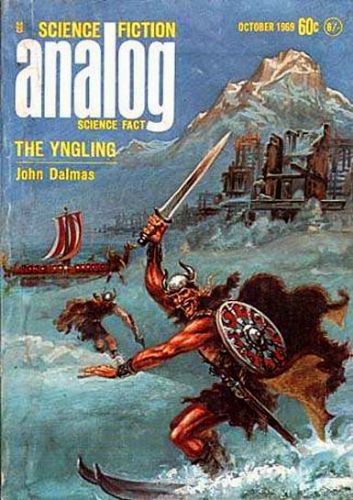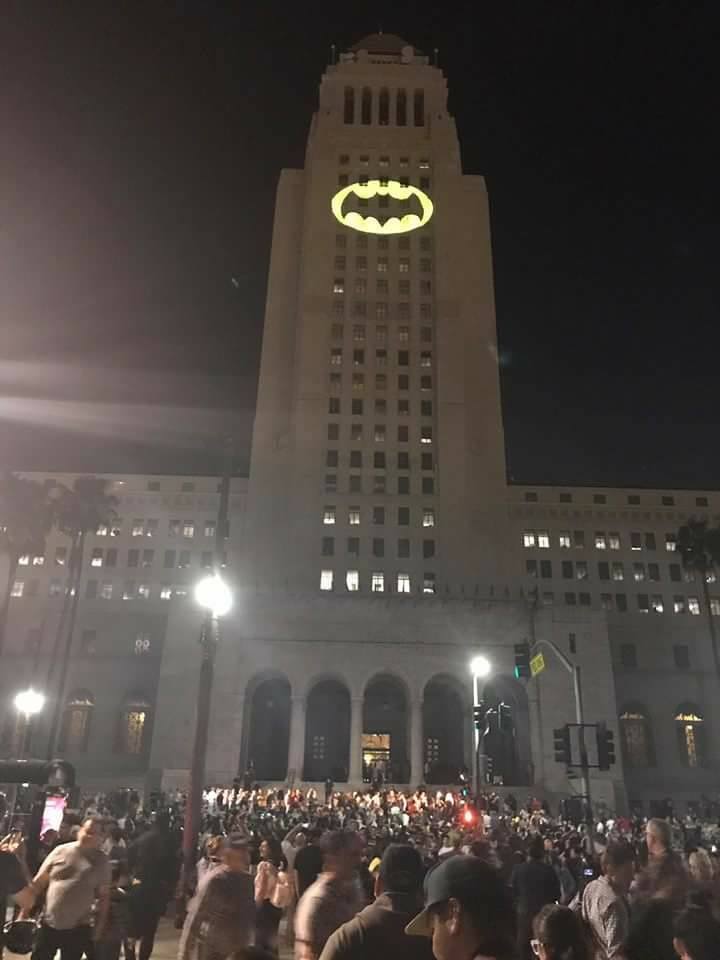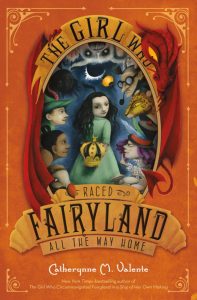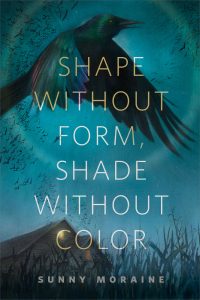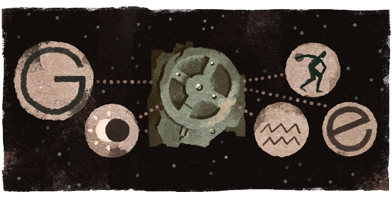(1) FILLING A KNEAD. A German company is working to make bread-baking in the ISS happen: “3, 2, 1 … Bake Off! The Mission To Make Bread In Space”.
Crumbs may seem harmless here on Earth, but they can be a hazard in microgravity — they could get in an astronaut’s eye, or get inhaled, causing someone to choke. Crumbs could even float into an electrical panel, burn up or cause a fire.
That’s part of the reason why it was a very big deal in 1965 when John Young pulled a corned beef sandwich out of his pocket as he was orbiting the earth with Gus Grissom.
“Where did that come from?” Grissom asked Young.
“I brought it with me,” Young said.
Young took a bite and then microgravity took over, spreading bread crumbs throughout the spacecraft.
Today, instead of bread, astronauts usually eat tortillas: They don’t crumble in the same way and they’re easy to hold with one hand as the astronaut floats about.
But for many Germans, tortillas just don’t cut it. So when a man named Sebastian Marcu heard that German Astronaut Alexander Gerst is returning to the International Space Station in 2018, that got him thinking: “Shouldn’t we do something to enable him to have fresh bread in space?”
(2) BLOWN UP. The inflatable ISS module is still going strong, and may lead to complete inflatable space stations: “After A Year In Space, The Air Hasn’t Gone Out Of NASA’s Inflated Module”.
The module is called BEAM, the Bigelow Expandable Activity Module, and it has been attached to the International Space Station since April last year.
Expandable modules allow NASA to pack a large volume into a smaller space for launch. They’re not made of metal, but instead use tough materials like the Kevlar found in bulletproof vests.
The station crew used air pressure to unfold and expand the BEAM, but it’s wrong to think about BEAM as expanding like a balloon that could go “pop” if something punctured it.
NASA’s Jason Crusan says there is a better analogy: “It’s much like the tire of your car.”
Chip Hitchcock calls it, “Another example of science bypassing SF — it looks like we may never have the space-based construction workers featured by writers from Heinlein to Steele.”
(3) BECOMING MARTIANS. Click to see a video of a long-term simulation of life on Mars: “On a mission to Mars (with Hawaii stopover)”
Researchers living near the active Hawaiian volcano Mauna Loa are six months into an eight-month mission which simulates what it’s like to live on Mars. We asked how “living on Mars” – in close quarters – has been so far.
(4) OPEN FOR SUBMISSIONS. Fantastic Trains: An anthology of Phantasmagorical Engines and Rail Riders is taking submissions until Midnight September 30, 2017.
Edited by Jerome Stueart and Neil Enock, the anthology focuses on speculative fiction stories of trains—fantasy, steampunk, science fiction, horror, slipstream, urban fantasy, apocalyptic, set in any time, any place—and will be released by EDGE Science Fiction and Fantasy Publishing in the spring of 2018.
Stories must be previously unpublished, in English, between 1,000-5,000 words.
Authors are invited to structurally play with some ‘locomotifs’ that will add interesting connections to these disparate and individual stories.
For more information, check out the call for submissions.
(5) CLARION. The 2018 Clarion Summer Workshop instructors for 2018 will be:
- Week 1 – Daniel Abraham
- Week 2 – Ken MacLeod
- Week 3 – Yoon Ha Lee
- Week 4 – Karen Lord
- Week 5 – Karen Joy Fowler
- Week 6 – Ellen Datlow
(6) PRESS GANG. Boskone 55 has announced that Harlan Ellison biographer Nate Segaloff as the NESFA Press Guest.
(7) SORRY GUV. I guess this just now came to the top of his To-Do list <rolleyes> — “Dick Van Dyke sorry for ‘atrocious cockney accent’ in Mary Poppins”.
Dick Van Dyke has apologised for the “most atrocious cockney accent in the history of cinema” more than half a century after his role in the 1964 Disney classic Mary Poppins.
The US actor played chimney-sweep Bert in the film, and has been the subject of much teasing from fans about his famously off-radar accent.
Van Dyke, 91, was chosen this week by Bafta to receive the Britannia award for excellence in television. Speaking afterwards, he said: “I appreciate this opportunity to apologise to the members of Bafta for inflicting on them the most atrocious cockney accent in the history of cinema.”
… Van Dyke recently announced that he would be doing “a little song and dance number” in the Mary Poppins sequel. He will play the part of Mr Dawes Jr, chairman of Fidelity Fiduciary bank, alongside Emily Blunt as the nanny extraordinaire in Mary Poppins Returns.
Van Dyke rose to prominence in films including Bye Bye Birdie, Mary Poppins and Chitty Chitty Bang Bang, as well as his 60s TV sitcom The Dick Van Dyke Show. His wide-spanning career has earned him five Emmys, a Tony, a Grammy, the SAG lifetime achievement award and induction into the Television Hall of Fame.
But he has previously spoken about his turn as Bert, saying he would never be allowed to forget it. “People in the UK love to rib me about my accent, I will never live it down,” he said. “They ask what part of England I was meant to be from and I say it was a little shire in the north where most of the people were from Ohio.”
(8) DIRECTING TOLKIEN. Finnish filmmaker Dome Karukoski confirms that he has been hired to direct a Hollywood biopic on British fantasy author J.R.R. Tolkien: “Finnish director Karukoski attached to US Tolkien movie”
A biopic based on the coming-of-age of writer J.R.R. Tolkien is to be made by the same Hollywood studio as the recent War for the Planet of the Apes. It could also be Finnish director Dome Karukoski’s international debut.
(9) TED TALK. Howard Hendrix passed along the link to the TED talk he presented in April at UC Riverside, “since it’s sfnal, concerns Phil Dick (among other matters), and was presented by a science fiction wirter (me).” It was just posted by TED last week. “Saving Private Mind: Madness, Privacy, Consciousness | Howard Hendrix”
Society is not a prerequisite for the existence of privacy. Privacy is a prerequisite for the existence of society. Howard Hendrix’s TEDxUCR talk explores the philosophical, legal, neurological and evolutionary contexts for understanding the relationship between privacy and individual human consciousness — particularly through the lens of “madness” in the lives and works of science fiction writer Philip K. Dick and Hendrix’s younger brother, Vincent John “Jay” Hendrix.
(10) THEY HAVE A WORD FOR IT. John Hawthorne helped create a resource on the topic of “amazing words that don’t exist in English.”
I recently reached out to over 150 language learning websites and facilities and asked them to give me some of their opinions on what are the most interesting foreign words that are not found in English. I took all my research and gave it to my colleague Adrian who made a list of 35 of the best words.
You can read all the takeaways from their research right here. These are three examples:
Antier/Anteayer (Spanish)
Can we all agree that saying, “The day before yesterday,” is a complete waste of words? So many words for such a simple concept. Those who speak Spanish have a much simpler version: “Antier”.
When did you last talk to your mom? Antier.
Desvelado (Spanish)
Insomnia. The tossing. The turning. The inability to fall asleep. That feeling of being sleep deprived is called “desvelado” in Spanish. It’s that feeling of exhaustion that comes after a terrible night’s sleep.
You need five cups of coffee. Why? Because desvelado.
Tuerto (Spanish)
What do you call a man with one eye who isn’t also a pirate? Tuerto. It seems like this word would have rather limited usage unless you work in a BB gun factory or something.
But you do have to admit, have a single word to describe someone with one eye is pretty fantastic.
(11) EARL GREY LISTENS. Elizabeth Fitzgerald, in “My Current Podcast Playlist”, provides an excellent survey of more than 15 sff, gaming and writing podcasts.
Not Now, I’m Reading: A new podcast just started by Chelsea of the Reading Outlaw and Kay Taylor Rae which focuses on reviewing genre books and media. As a keen reader of romance, I appreciate that their focus is a little wider than just SFF and the way they’re unapologetic about their passions.
Overinvested: Gavia Baker-Whitelaw and Morgan Leigh Davies review movies, TV shows and comics. Most are genre, though not all. These ladies are savvy critics who really know their stuff and are also not afraid to love material they know is rubbish.
The Skiffy and Fanty Show: This Hugo-nominated podcast is headed up by Shaun Duke and Jen Zink with a large cast of co-hosts. They do multiple segments of varying kinds, including signal boosts, interviews and Torture Cinema (wherein a panel reviews a movie deemed to be awful by pop culture).
(12) SWARMING SHARKES. Are these the final transmission of the Shadow Clarke Jury? The Clarke Award winner, Colson Whitehead’s Underground Railroad, was announced today.
Awards, it seems to me, work in unusual ways in the science fiction community. They link to an existing community of fans, writers and publishers that has its own particular shape and weight. Fandom is changing. Having spent much of the twentieth century on the edges of literary culture, what was once marginal is now thoroughly mainstream. The success of major titles such as Harry Potter, Game of Thrones and The Hunger Games, promoted by cinematic adaptations, has broadened the pool of readers—but simultaneously brought pressures of its own, the pressure to sell and sell big, to build blockbuster brands.
Awards fit awkwardly into this changing space. Are they primarily markers of prestige? Are they handed out by fan communities to honor the successes of their own? Do they chart new trends? Whereas winning the Man Booker Prize can have huge ramifications for an author’s career—and their sales—this isn’t really the case for science fiction awards. Many writers and editors will tell you that even the Hugos in most cases don’t result in a substantial change in sales numbers. One case, oddly enough, where it did was Cixin Liu’s The Three-Body Problem which won the 2015 award for best novel, a year that was mired down by the Sad Puppies/Rabid Puppies slate-creation. In fact, it may well have been the high volume of conversation in online circles surrounding those Hugo awards that inadvertently contributed to the sales boost. Certainly, journalists could sense a story and so the firestorm may well have provoked media attention that simply wouldn’t either ways have focused on the Hugos.
And if awards themselves occupy an ill-defined space then the relationship between awards and criticism is even murkier. Sometimes critics participate in the process of choosing award winners but just as frequently that role falls to the fans themselves, through various membership and voting systems. Fans of a genre that has always had a popular element—almost by definition—and has for much of its existence been barred from prestige culture may well have a justified suspicion of criticism. And yet just as science fiction is going mainstream, it is also entering areas where it was previously barred: there are several degrees that include science fiction literature within the UK and the field itself has developed through prizes like the Clarke Awards and through institutions like the British Science Fiction Association.
What they thought should win —
As regards the Sharke winner, the race was between Colson Whitehead’s The Underground Railroad, Lavie Tidhar’s Central Station, and Martin MacInnes’s Infinite Ground. But whilst Infinite Ground enjoyed passionate support from two or three jurors in particular, and Central Station ran a close second for pretty much the entire jury, in the end it was The Underground Railroad that came through as the clear winner. ‘The Whitehead is a phenomenal book,’ Vajra said, summing up our discussions. ‘In my reading, the very core of science fiction is not novelty, but freedom: that is, emancipation. By this measure The Underground Railroad is as core as core science fiction can possibly be, and the extent to which this is contested is an indictment of the state of discourse in science fiction itself. I would like to see it win all the awards and be firmly planted in this soil so that a better science fiction could grow from here. It’s not Whitehead that needs it so much as the rest of us.’
What they predicted would win —
We all felt that whilst Ninefox Gambit is very much a traditional space opera, it also presents some interesting variations on that tried-and-tested formula by being more ambitious in terms of its concept, more inventive in its use of language, more diverse in relation to its character demographic. For all these reasons – together with the fact that we all, to varying degrees, found things in this novel to admire – we came eventually to the conclusion that Ninefox Gambit would be the title inside that envelope:
(13) THE BOOKER. The 2017 Man Book Prize longlist was announced yesterday. Mark-kitteh says, “I see several books of genre interest in the Booker. Underground Railroad, 4 3 2 1, and Exit West. (There may be more, I’m not familiar with them all).” You can add Lincoln in the Bardo, for sure.
Title Author (nationality) (imprint)
- 4 3 2 1 by Paul Auster (US) (Faber & Faber)
- Days Without End by Sebastian Barry (Ireland) (Faber & Faber)
- History of Wolves by Emily Fridlund (US) (Weidenfeld & Nicolson)
- Exit West by Mohsin Hamid (Pakistan-UK) (Hamish Hamilton)
- Solar Bones by Mike McCormack (Ireland) (Canongate)
- Reservoir 13 by Jon McGregor (UK) (4th Estate)
- Elmet by Fiona Mozley (UK) (JM Originals)
- The Ministry Of Utmost Happiness by Arundhati Roy (India) (Hamish Hamilton)
- Lincoln in the Bardo by George Saunders (US) (Bloomsbury)
- Home Fire by Kamila Shamsie (UK-Pakistan) (Bloomsbury)
- Autumn by Ali Smith (UK) (Hamish Hamilton)
- Swing Time by Zadie Smith (UK) (Hamish Hamilton)
- The Underground Railroad by Colson Whitehead (US) (Fleet)
(14) TOOTHSOME. Once the Sharkes wrap up, people will have to depend on Syfy for their finnish entertainment: Sharknado 5: Global Swarming.
With much of America lying in ruins, the rest of the world braces for a global sharknado, Fin and his family must travel around the world to stop them.
(15) STARSHIP PRANKS. Fox showed this version of their trailer for The Orville at Comic-Con.
THE ORVILLE is a one-hour science fiction series set 400 years in the future that follows the adventures of the U.S.S. Orville, a mid-level exploratory vessel. Its crew, both human and alien, faces the wonders and dangers of outer space, while also dealing with the familiar, often humorous problems of regular people in a workplace…even though some of those people are from other planets, and the workplace is a faster-than-light spaceship. In the 25th century, Earth is part of the Planetary Union, a far-reaching, advanced and mostly peaceful civilization with a fleet of 3,000 ships.
[Thanks to Cat Eldridge, Hampus Eckerman, Mark-kitteh, John King Tarpinian, Paul Weimer, Martin Morse Wooster, and Michael J. Walsh for some of these stories. Title credit goes to File 770 contributing editor of the day Andrew (Hopefully I’ve used this only once…).]





